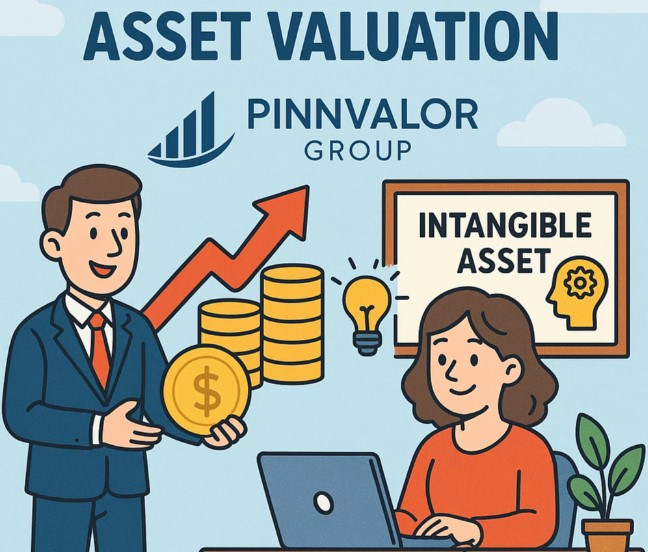
A Practical Guide to Borrowing Costs and Intangible Asset Valuation
In today’s complex financial landscape, understanding the intricacies of borrowing costs and the valuation of intangible assets is essential for accurate financial reporting and strategic decision-making. This guide breaks down both concepts, providing practical insights and addressing frequently asked questions to help businesses and professionals navigate these areas with clarity and confidence.
Could misinterpreting borrowing costs be quietly distorting your financial statements?
Capitalizing borrowing costs is not optional—it’s a compliance requirement that can reshape your financials. Miss it, and you might be misreporting your growth
🔹 Part 1: Borrowing Costs – Meaning, Capitalization & Standards
✅ What Are Borrowing Costs?
Borrowing costs refer to interest and other costs incurred by an entity in connection with the borrowing of funds. These may include:
- Interest expense on loans
- Amortization of discounts or premiums related to borrowings
- Finance charges on finance leases
- Exchange differences arising from foreign currency borrowings (under certain conditions)
✅ When Should Borrowing Costs Be Capitalized?
According to Ind AS 23 (Borrowing Costs) and IAS 23, borrowing costs directly attributable to the acquisition, construction, or production of a qualifying asset must be capitalized.
A qualifying asset is one that necessarily takes a substantial period of time to get ready for its intended use or sale (e.g., manufacturing plants, large-scale infrastructure, development-stage intangible assets).
✅ Capitalization Principles – Key Points
- Capitalization begins when:
- Expenditures for the asset are being incurred
- Borrowing costs are being incurred
- Activities to prepare the asset for use/sale are in progress
- Capitalization suspends during extended periods when development is interrupted
- Capitalization ceases when substantially all activities necessary to prepare the asset are complete
✅ Specific vs General Borrowings
- Specific Borrowings: If a loan is taken specifically for a qualifying asset, the actual interest is capitalized.
- General Borrowings: A weighted average capitalization rate is applied to expenditures on qualifying assets.
🔹 Part 2: Intangible Asset Valuation – Approaches & Application
✅ What Are Intangible Assets?
Intangible assets are non-monetary assets without physical substance. Common examples include:
- Trademarks and brands
- Patents
- Customer relationships
- Goodwill
- Software and proprietary technology
✅ Why Valuation of Intangibles Matters
- Mergers & Acquisitions: To assess true enterprise value and negotiate deals
- Financial Reporting: As per Ind AS 38 / IAS 38, for impairment testing and recognition
- Taxation & Transfer Pricing: Valuation is crucial for compliance and planning
- Litigation & Licensing: Used for damage assessment and royalty negotiations
✅ Common Approaches to Intangible Asset Valuation
- Cost Approach – Values an intangible based on the cost to recreate or replace it. Useful when historical costs are traceable or for internal-use software.
- Market Approach – Based on prices and other relevant information from market transactions involving identical or comparable assets.
- Income Approach – Most widely used, especially for high-value intangibles. Involves estimating future cash flows and discounting them to present value. Sub-methods include:
- Relief-from-Royalty Method
- Excess Earnings Method
- Multi-Period Excess Earnings Method (MPEEM)

🔹 Interplay Between Borrowing Costs and Intangibles
Intangible assets that are under development (e.g., R&D projects, internally developed software) can be qualifying assets under Ind AS 23. In such cases:
- Borrowing costs can be capitalized during the development phase
- After readiness for use, subsequent costs are expensed unless they meet recognition criteria
🔹 Frequently Asked Questions (FAQs)
- Q1: Can we capitalize borrowing costs on a ready-to-use intangible asset purchase?
A: No. Capitalization is only allowed if the asset qualifies, i.e., is under construction or development for a substantial period. - Q2: Are borrowing costs on R&D expenses capitalizable?
A: Only the development phase qualifies, provided it meets asset recognition criteria under Ind AS 38. - Q3: Can goodwill be valued independently for reporting purposes?
A: Goodwill is not separately valued post-acquisition but tested for impairment annually under Ind AS 36. - Q4: What is the most common method used for brand valuation?
A: Relief-from-Royalty Method (a form of income approach) is widely used for valuing brands.
🔹 Final Thoughts
A sound understanding of borrowing cost capitalization and intangible asset valuation is vital for fair financial reporting and strategic planning. As intangible assets continue to dominate corporate balance sheets and borrowing continues to fund innovation, aligning these two areas with accounting and valuation standards is not just compliance—but competitive edge.
📌 Key Takeaways
- Capitalize borrowing costs only on qualifying assets during development
- Intangible valuation requires a tailored approach—cost, market, or income
- Ensure compliance with Ind AS/IAS and link accounting with strategic outcomes
